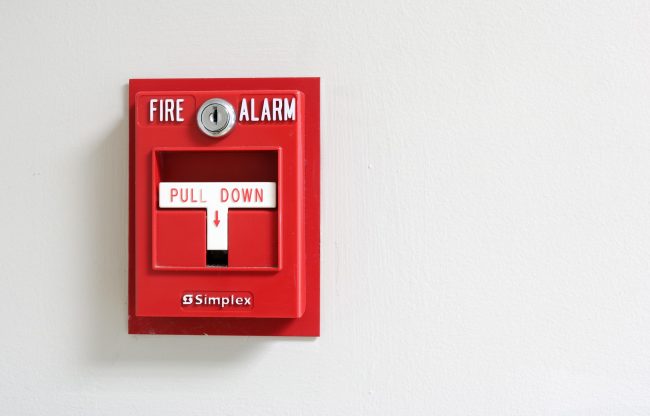According to the Canadian Red Cross, one of the most common emergencies experienced by Canadians is a home fire. But have you ever considered what would happen to your organization in the event of a fire?
Each year, fires cause millions of dollars in damage to Canadian businesses. This not only becomes a safety issue, but certain fire prevention measures are legally required to be taken by organizations.
In order to minimize the impact and probability of fires, it is critical to be prepared. You can ensure this by developing a plan that is specific to your organization, identifying hazards, and training your employees on these emergency protocols.
Fire Prevention Strategies
1. Fire Safety Plans for Organizations
Fire Safety Plans are detailed documents, which cover all aspects of fire safety for a property. These plans are often required by local Fire Code, depending on the type of occupancy. Although not all properties require a legal Fire Safety Plan document, an Emergency Evacuation Plan, which provides similar content is highly recommended. To receive additional information, check with your local Authority Having Jurisdiction and local fire department.
Each Fire Safety Plan should be specific to the business or property. Conducting reviews and audits of the building is critical for identifying factors, which may become obstacles of fire safety. Some of these factors include:
- Site layout
- Points of entry & exit
- Use of the building
- Nearby roadways
- Where & how items are stored
- Alarm & sprinkler system
A properly designed plan will increase efficiency levels for a well-organized and safe evacuation. Although each plan may vary depending on jurisdiction, a general Fire Safety Plan should include the following:
- Emergency procedures to follow in the event of a fire. This includes sounding the alarm, notifying the fire department, evacuating building occupants, and controlling the fire if possible.
- How fire drills will be conducted, as well as how often.
- Information required for staff members who have been given fire safety responsibilities.
- Training and education for senior management and staff members with fire safety duties.
For further information on what an organization Fire Safety Plan should include, visit the Canadian Centre for Occupation Health and Safety (CCOHS).

2. Fire Safety Plan for Employees
Although organizations are not always required to have a Fire Safety Plan, it is highly suggested that an employer develops emergency procedures for all occupants of their organization. This plan should also include safety measurements for individuals who may require assistance, such as those with mobility, hearing, or visual challenges.
We recommend creating a Policy for your organization, which includes the following:
- Fire prevention measures
- Plans for employees requiring assistance
- Evacuation plans
- Fire mitigation strategies
For further information on what an employee Fire Safety Plan should include, visit the CCOHS.

3. Fire Protection Measures
Communication is key when it comes to ensuring a Fire Safety Plan and fire protection systems are set in place. It is also important to keep this information readily available for employees, in order to maintain staff competency as it pertains to fire safety. Critical fire protection measures to consider, include:
- Communicating the Fire Safety Plan and response procedures to both current staff and new staff in orientation, as well as throughout their employment.
- Labelling emergency numbers and instructions near telephones.
- Having a designated Emergency Warden who will provide guidance and assistance to staff with their evacuation needs and emergency information.
- Ensuring all aisles and emergency exits are clear of objects.

4. Fire Hazard Checklist
The CCOHS has created a list of important questions to consider when creating a Fire Safety Plan for organizations. During the winter season, it is common for employees to bring space heaters to warm up their office, or Christmas decorations to make their space more festive. It is therefore important to consider all seasons of the year when conducting an audit, as space heaters and decorative lights may be considered hazards.
Important questions to consider for the fire hazard audit, include:
- Are all sources of ignition identified?
- Is all wiring installed properly and appropriately to the current or voltage ratings?
- Has the workplace taken fire safety precautions for verticals that have exposed flames?
- Is an inventory for all flammable and combustible materials available?
- Are flammable and combustible materials stored and used in a safe manner?

The fire prevention strategies listed above are useful tools to determine and identify an organization’s risk for fire damage and potential loss. Speaking to an insurance representative regarding claims and incident management systems, can benefit an organization’s emergency plan, and ultimately reduce the total cost of risk.
For more information on creating a Fire Safety Plan for your organization, visit the Government of Canada’s Planning for Safety Guide.





